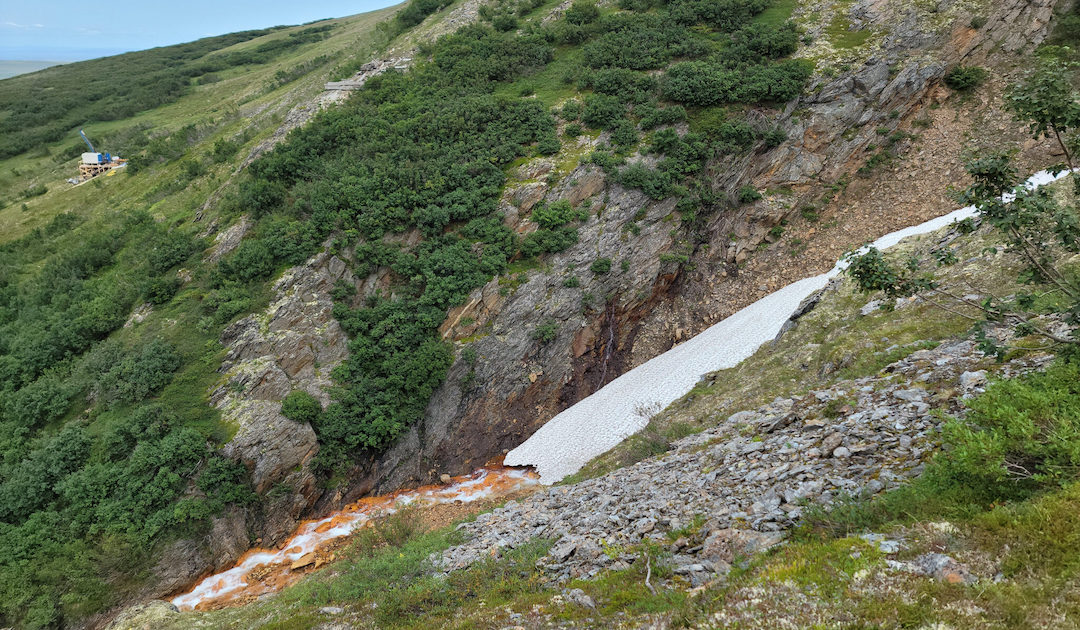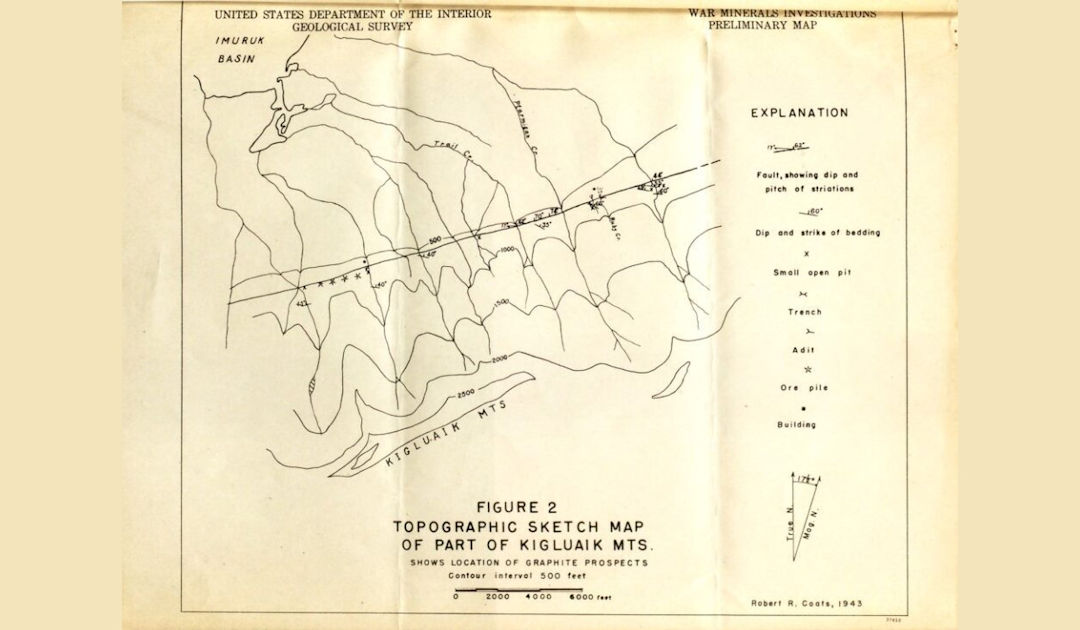
The U.S. Department of Defense has awarded a $37.5 million grant to boost an Alaska mine project that would produce a mineral deemed critical to electronics and batteries: graphite. The award is to go to Graphite One Inc., a Vancouver-based company seeking to develop a mine about 37 miles north of Nome, the department said on Monday. The grant is intended to help Graphite One complete its economic feasibility study more quickly. It was made through a department office focused on expanding manufacturing capability.
Graphite – well-known for its use in ordinary pencils — is considered a critical mineral because it is used in high-temperature lubricants, brushes for electrical motors, friction materials and battery and fuel cells, according to the U.S. Geological Survey.
The Graphite Creek deposit that Graphite One is seeking to develop is, by far, the largest of 10 identified significant graphite deposits in the nation, according to the USGS. The U.S. has not produced any domestic graphite since the 1950s and depends entirely on imports, mostly from China, Mexico and Canada, according to the USGS.
Helping Graphite One advance its project is in the national interest, the Department of Defense said in a statement.
“This investment to increase domestic capabilities for graphite exemplifies Industrial Base Policy’s commitment to building a resilient industrial base to meet current and future national defense requirements,” Dr. Laura Taylor-Kale, Assistant Secretary of Defense for Industrial Base Policy, said in the statement. “The agreement with Graphite One (Alaska) advances the Defense Department’s strategy for minerals and materials related to large-capacity batteries.”
Graphite One’s chief executive officer said the company plans to start the accelerated feasibility study “immediately.”

“This Department of Defense grant underscores our confidence in our strategy to build a 100% U.S.-based advanced graphite supply chain — from mining to refining to recycling. The U.S. simply cannot maintain a 21st Century tech-driven economy without Critical Minerals like graphite,” Anthony Huston, founder and CEO of Graphite One Inc., said in the Department of Defense statement.
The Graphite One mine, if developed, would use an expanded Port of Nome as a shipping and staging site.
Money for the grant comes from the Inflation Reduction Act of 2022, a bill passed with only Democratic votes.
Graphite production is not new to Graphite Creek. It was the site of a small-scale graphite mining operation about a century ago. Claims were first staked in 1900, according to the USGS. A small amount of flaked graphite was mined in the early part of the 20th century, a few hundred tons at most, before mining there ceased after about 1917, according to the USGS.
Graphite One’s proposed project would dwarf any past mining efforts. The company’s pre-feasibility report issued last year outlines a 26-year mine producing 75,026 metric tons of graphite products annually. The project would have to be of substantial size to attract customers and be economically worthwhile to develop, company officials told Nome residents in April.
In the Nome area, some officials and residents welcome the mine development, while others have expressed concerns about a planned access road and effects on subsistence users and resources. Graphite One officials have made multiple public presentations to update communities on the mine progress and address concerns.
Gov. Mike Dunleavy, in a statement, welcomed the grant.
“Thank you to the Department of Defense for recognizing the importance of Alaska’s vast mineral wealth, one example being Graphite One,” Dunleavy said in the statement.
Dunleavy, along with other Republicans, opposed the Inflation Reduction Act when it was being debated and criticized it, characterizing it as unleashing too much government spending. “When you spend more money in an inflationary period, it’s difficult to understand how you reduce inflation,” he said in a Bloomberg TV interview last August.
On-site work continues at Graphite Creek. A spokesperson for Graphite One said that as of Monday, there were 53 workers at the site, three drill rigs operating and environmental and geotechnical studies ongoing.
Yereth Rosen, Alaska Beacon
Alaska Beacon is part of States Newsroom, a network of news bureaus supported by grants and a coalition of donors as a 501c(3) public charity. Alaska Beacon maintains editorial independence. Contact Editor Andrew Kitchenman for questions: info@alaskabeacon.com. Follow Alaska Beacon on Facebook and Twitter.
More about this topic





